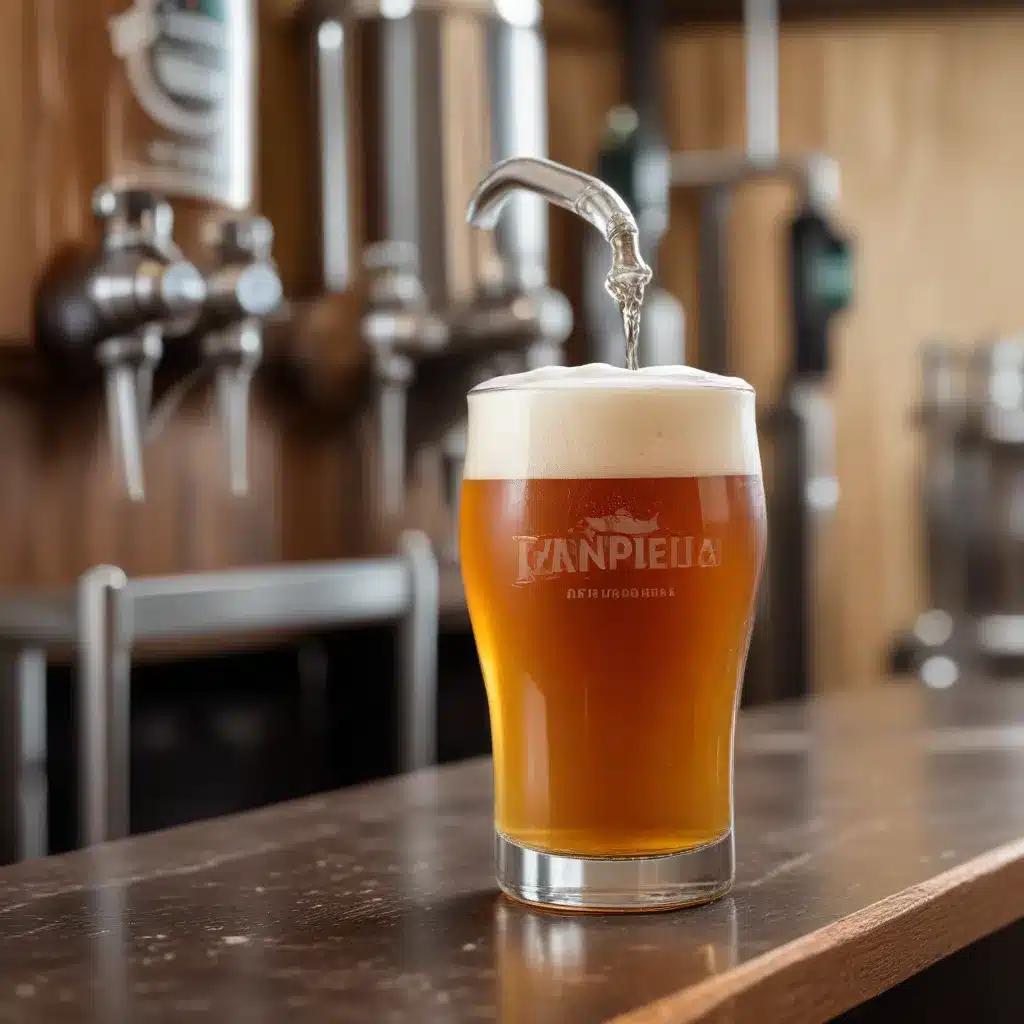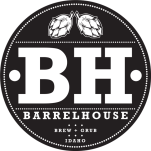
The Captivating Role of CO2 in Elevating the Dining Experience
As an experienced chef and barbecue expert, I’ve had the pleasure of working with the talented team at BarrelHouse Pub & Grill, where we’ve relentlessly pursued the perfect balance of carbonation and mouthfeel in our craft beer offerings. It’s a fascinating journey, one that delves deep into the science behind the effervescent charm that transforms a simple brew into a delight for the senses.
Let me take you on an exploration of the captivating role that carbon dioxide (CO2) plays in shaping the ultimate drinking experience. At BarrelHouse, we’ve discovered that the key to pulling the perfect pint lies in understanding the intricate interplay between CO2 gas and the beer itself. From enhancing aroma and flavor to ensuring that delightful tingle on the palate, this ubiquitous compound is the driving force behind the effervescent allure that has kept beer enthusiasts captivated for centuries.
Unraveling the Science of Effervescence
The process of brewing beer involves several key elements, and CO2 is undoubtedly one of the most essential. This gas is a natural by-product of the fermentation process, where yeast converts sugars into alcohol and CO2. By carefully controlling the levels of CO2 during the brewing and carbonation stages, we at BarrelHouse are able to achieve the desired carbonation and texture, contributing to an outstanding drinking experience for our patrons.
When beer is carbonated, CO2 is dissolved in the liquid under pressure, creating those delightful bubbles that we associate with a well-crafted brew. The amount of CO2 dissolved in the beer affects not only its carbonation level but also its aroma and flavor. Understanding the science behind CO2 and its interaction with beer is fundamental to mastering the art of brewing and ensuring consistency in the final product.
Effervescence, the formation of bubbles in a liquid, is a captivating phenomenon that significantly impacts the sensory experience of consuming beer. CO2 gas is the primary driver of effervescence in beer, creating the distinctive froth and fizz that characterize a well-carbonated brew. The science behind effervescence lies in the solubility of CO2 in beer, as well as the release of CO2 when the beer is poured or agitated.
Balancing CO2 Levels for the Perfect Pint
Several factors contribute to the levels of CO2 when pulling the perfect pint, ultimately affecting its carbonation, mouthfeel, and overall sensory characteristics. The carbonation process involves balancing the amount of CO2 dissolved in the beer with the desired level of effervescence, ensuring that the bubbles enhance the drinking experience without overwhelming the flavor or texture.
One key factor influencing CO2 levels is the pressure at which the beer is carbonated and stored. Higher pressures result in greater CO2 gas solubility, leading to higher carbonation levels in the beer. Temperature also plays a crucial role, as colder liquids can hold more dissolved CO2 than warmer ones. By controlling the temperature and pressure during carbonation, our brewers at BarrelHouse can fine-tune the CO2 levels to achieve the perfect balance for each beer style.
The composition of the beer, including its alcohol content, residual sugars, and acidity, also impacts CO2 solubility. Beers with higher alcohol content tend to hold onto CO2 gas more effectively, while residual sugars can affect the perception of sweetness and carbonation. Acidity, on the other hand, can influence the sharpness and effervescence of the beer, contributing to its overall character and drinkability.
The Influence of CO2 on Flavor and Mouthfeel
Beyond the visual appeal of effervescence, CO2 gas plays a pivotal role in shaping the flavor and texture of beer, contributing to its overall profile and drinkability. When CO2 gas is dissolved in beer, it forms carbonic acid, which imparts a refreshing and slightly acidic bite, enhancing the beer’s crispness and quenching quality.
The presence of CO2 also accentuates the aroma of the beer, releasing volatile compounds that contribute to its bouquet and complexity. The carbonation level of beer significantly influences its mouthfeel, affecting the perceived body, effervescence, and overall sensation on the palate. Beers with higher carbonation levels often feel lighter and more refreshing, while those with lower carbonation can exhibit a creamier and smoother texture.
By manipulating CO2 levels, our brewers at BarrelHouse can tailor the mouthfeel of their beers to complement the desired flavor and style, ensuring a harmonious sensory experience for our customers from the very first sip. This attention to detail is what sets BarrelHouse apart, as we strive to deliver a perfectly pulled pint that captivates the senses and leaves a lasting impression.
Mastering CO2 Control: Techniques and Strategies
Achieving the ideal carbonation and CO2 levels in beer requires precision and expertise, and at BarrelHouse, we employ various techniques to control and manipulate the effervescence of our creations. One common method is the use of carbonation charts, which provide guidelines for determining the appropriate carbonation level based on factors such as beer style, temperature, and desired level of effervescence.
Another technique we utilize is the introduction of CO2 through carbonation stones or diffusion stones, which are porous devices that facilitate the dissolution of CO2 into the beer. By carefully introducing CO2 through these stones, we can achieve consistent and uniform carbonation throughout the liquid, ensuring that each sip delivers a harmonious effervescence and mouthfeel.
For beers that undergo natural carbonation, such as those undergoing secondary fermentation in the bottle or cask, our team at BarrelHouse closely monitors the conditioning process to achieve the desired CO2 levels. By assessing the progress of carbonation and allowing the beer to mature under controlled conditions, we can ensure that the final perfectly pulled pint exhibits the perfect balance of effervescence and flavor.
Tailoring CO2 Levels to Beer Styles
The influence of CO2 extends beyond the flavor and texture of beer, shaping its presentation and the overall customer experience at BarrelHouse. The visual appeal of effervescence, showcased through the formation of a frothy head and cascading bubbles, enhances the aesthetic allure of beer, inviting our patrons to indulge in its sensory pleasures.
Well-carbonated beers often exhibit vibrant and lively effervescence, contributing to an enticing visual display that complements the overall drinking experience. The sight of bubbles rising through the liquid and forming a creamy head on top of the beer creates an impression of freshness and vitality, signaling to our customers that they are about to enjoy a well-crafted, perfectly pulled pint.
The interplay of carbonation, aroma, and flavor creates a multi-dimensional drinking experience that captivates enthusiasts and aficionados alike. Whether enjoyed on its own or paired with our renowned barbecue offerings, a well-carbonated beer elevates the moment, inviting our customers to savor each sip and appreciate the artistry that goes into crafting the perfect pint.
Craft Beer and the Art of Balancing CO2
The influence of CO2 gas varies across different beer styles, with each style presenting unique carbonation profiles that contribute to its character and appeal. Lighter beer styles, such as pilsners and lagers, often exhibit higher levels of carbonation, lending them a refreshing and crisp effervescence that complements their clean and delicate flavors.
In contrast, darker and richer beer styles, such as stouts and porters, tend to feature lower carbonation levels, resulting in a smoother and more velvety mouthfeel. The subdued effervescence of these styles allows their complex flavors to take center stage, providing a luxurious and indulgent drinking experience that invites contemplation and appreciation.
At BarrelHouse, our skilled brewers are constantly experimenting with diverse ingredients and brewing methods to create beers that showcase a wide range of flavors, textures, and aromas. As such, the role of CO2 in enhancing and complementing these characteristics becomes paramount, influencing the overall presentation and enjoyment of the beer.
Delivering the Perfect Pint at BarrelHouse
The world of brewing is fascinating, and the role of CO2 in pulling the perfect pint is essential. CO2 affects the aroma, flavor, effervescence, and mouthfeel of beer, making it a crucial factor in creating a pleasant drinking experience at BarrelHouse Pub & Grill.
By studying the science behind effervescence, understanding the factors that influence CO2 levels in beer, and employing techniques for controlling and managing CO2 gas, our team at BarrelHouse ensures that every pint we serve is a testament to our dedication and expertise. Whether you’re enjoying a crisp, refreshing lager or indulging in a rich, velvety stout, the perfect balance of carbonation and mouthfeel is what sets our offerings apart, delivering an unparalleled dining and drinking experience.
So, the next time you visit BarrelHouse, take a moment to appreciate the captivating effervescence of your pint and the science behind the magic. As you savor each sip, let the harmonious interplay of aroma, flavor, and texture transport you to a world of craft beer perfection, where the pursuit of the perfect pint is an endless and rewarding journey.


